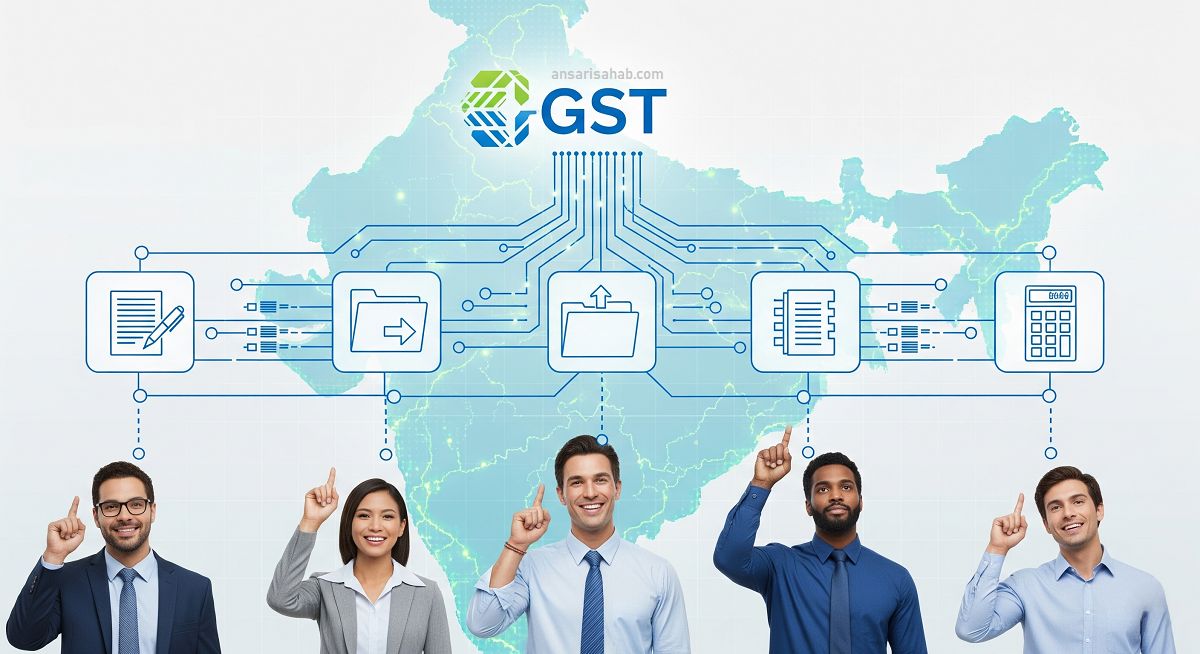India’s Goods and Services Tax (GST) system has undergone significant reforms, effective from September 22, 2025. These changes aim to simplify compliance for businesses, particularly small and medium enterprises (SMEs). Firms can now navigate the GST landscape more efficiently by leveraging new tools, understanding updated regulations, and adopting best practices.
Simplified GST Structure: A Step Towards Easier Compliance
The GST Council has streamlined the tax framework by reducing the number of tax slabs from four to three: 5%, 18%, and 40%. This simplification eliminates the 12% and 28% slabs, reducing classification disputes and making it easier for firms to determine applicable tax rates. For example, items like packaged food, soaps, and small vehicles now fall under the 5% slab, while standard goods and services are taxed at 18%. Luxury and sin goods attract a 40% tax rate.
Leveraging Technology for Efficient GST Compliance
The government has introduced several digital tools to aid firms in complying with GST rules:
- Auto Refunds and Prefilled Returns: Starting October 2025, businesses can benefit from automated refund processes and prefilled tax returns, reducing manual errors and saving time.
- Simplified Registration for E-commerce Sellers: Small suppliers selling through electronic commerce platforms can now register once for all states, streamlining the process for businesses operating across multiple regions.
- Mandatory Multi-Factor Authentication (MFA): To enhance security, the GST portal now requires MFA for users, ensuring that sensitive financial information is protected.
By integrating these tools into their operations, firms can ensure timely and accurate compliance with GST regulations.
Expert Insights: Government’s Commitment to Ease of Compliance
Sanjay Kumar Agarwal, Chairman of the Central Board of Indirect Taxes and Customs (CBIC), emphasized that the recent GST reforms aim to provide greater certainty and stability for businesses. He encouraged companies to ensure that any reductions in tax rates are appropriately and fully transferred to consumers, highlighting the importance of fairness and transparency in the new GST framework.
Practical Steps for Firms to Ensure GST Compliance
To effectively comply with GST rules, firms should consider the following steps:
- Review Product Classifications: Ensure that all goods and services are correctly classified under the new tax slabs to avoid misclassification and potential penalties.
- Adopt Digital Tools: Utilize the new digital tools provided by the government to streamline invoicing, tax filing, and refund processes.
- Stay Informed: Regularly update internal systems and processes to align with the latest GST regulations and reforms.
- Train Staff: Equip employees with the necessary knowledge and skills to navigate the updated GST framework effectively.
By proactively implementing these strategies, firms can navigate the evolving GST landscape with confidence.
FAQs
A1: The new GST rates, effective from September 22, 2025, simplify the tax structure to 5%, 18%, and 40% slabs.
A2: Firms can ensure accurate compliance by reviewing product classifications, adopting digital tools, staying informed about regulatory changes, and training staff accordingly.
A3: The government has introduced tools such as auto refunds, prefilled returns, simplified registration for e-commerce sellers, and mandatory multi-factor authentication for enhanced security
Sources:
Kotak mutual Fund
Economic Times
Times of India









